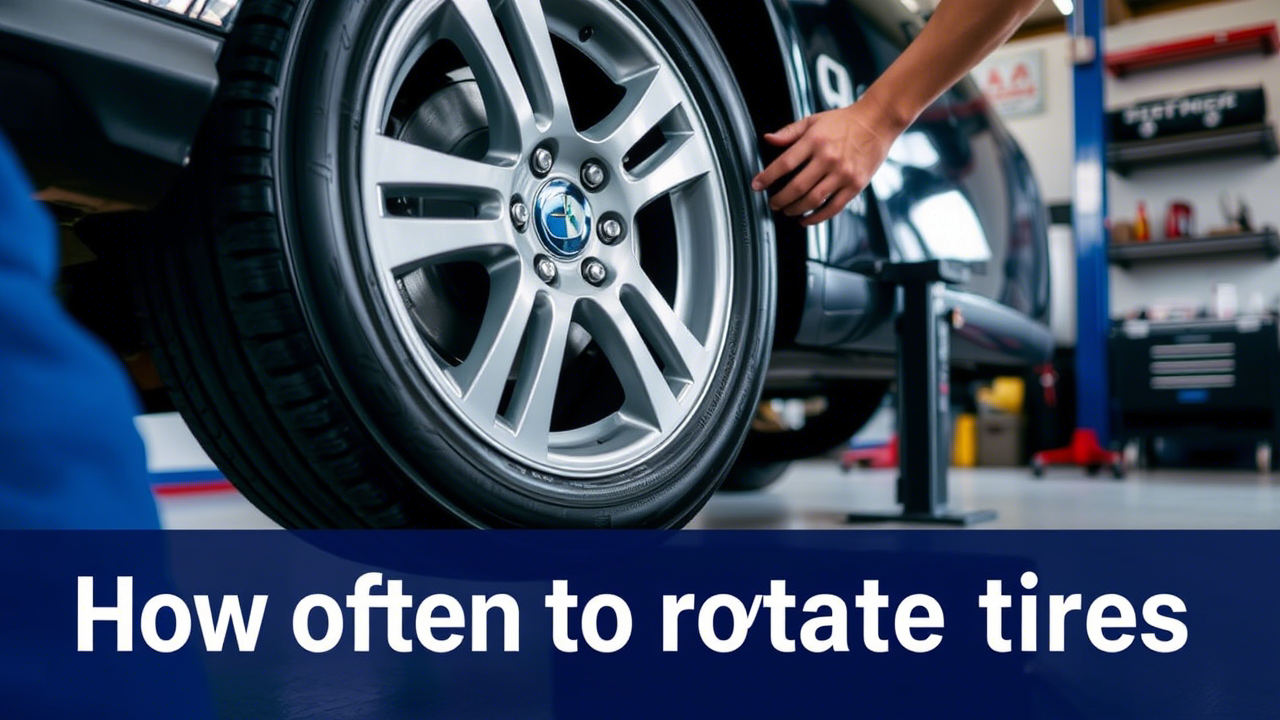Proper tire rotation is essential for maintaining vehicle safety, improving fuel efficiency, and extending the lifespan of your tires. But how often should you rotate your tires to ensure optimal performance? In this comprehensive guide, we’ll walk you through the recommended rotation intervals, different rotation patterns, and the benefits of regular tire maintenance.
Why Is Tire Rotation Important?
Before diving into how often you should rotate your tires, let’s understand why it’s necessary:
- Even Tire Wear: Regular rotation ensures that all tires wear evenly, preventing premature tread wear.
- Improved Traction: Balanced wear enhances grip, especially in wet or slippery conditions.
- Better Fuel Efficiency: Uneven tires create drag, reducing gas mileage.
- Extended Tire Life: Proper rotation can add thousands of miles to your tires’ lifespan.
According to Tire Industry Association (TIA), rotating tires is one of the simplest yet most effective ways to maintain vehicle performance.
How Often Should You Rotate Your Tires?
The general rule of thumb is to rotate your tires every 5,000 to 7,500 miles. However, this can vary based on several factors:
1. Manufacturer Recommendations
Always check your vehicle’s owner’s manual for specific guidelines. Some manufacturers suggest rotations every:
- 5,000 miles (for all-wheel-drive or performance vehicles)
- 7,500 miles (for front-wheel or rear-wheel-drive cars)
- 10,000 miles (for vehicles with uniform tire wear)
2. Driving Habits & Conditions
- Aggressive Driving: Frequent hard braking or acceleration wears tires faster—rotate every 5,000 miles.
- Off-Road Driving: Rough terrain increases wear—rotate every 3,000–5,000 miles.
- Long Highway Commutes: Consistent speeds reduce uneven wear—rotate every 7,500 miles.
3. Tire Type
- All-Season Tires: Typically last longer—rotate every 6,000–8,000 miles.
- Performance Tires: Softer rubber wears faster—rotate every 5,000 miles.
- Winter Tires: Seasonal use means less frequent rotation—check tread wear annually.
Step-by-Step Guide to Rotating Your Tires
Step 1: Determine Your Vehicle’s Tire Rotation Pattern
Different drivetrains (FWD, RWD, AWD) require different rotation methods:
Front-Wheel Drive (FWD) – Forward Cross
- Front tires move straight to the rear.
- Rear tires switch to the opposite front positions.
Rear-Wheel Drive (RWD) – Rearward Cross
- Rear tires move straight to the front.
- Front tires switch to the opposite rear positions.
All-Wheel Drive (AWD) & 4WD – X-Pattern
- Front left moves to rear right.
- Front right moves to rear left.
- Rear left moves to front right.
- Rear right moves to front left.
For directional tires (with tread patterns facing one way), only front-to-back rotation is possible.
Step 2: Gather Necessary Tools
- Jack & jack stands
- Lug wrench
- Torque wrench
- Wheel chocks
Step 3: Lift the Vehicle & Remove Tires
- Park on a flat surface and engage the parking brake.
- Loosen (but don’t remove) lug nuts before lifting.
- Jack up the car and secure it with stands.
- Remove the wheels and place them in their new positions.
Step 4: Reinstall & Torque Wheels Properly
- Hand-tighten lug nuts in a star pattern to ensure even pressure.
- Use a torque wrench to tighten to the manufacturer’s specs (usually 80–100 lb-ft).
Step 5: Check Tire Pressure & Alignment
- Adjust air pressure as needed (refer to door jamb sticker).
- If uneven wear persists, get a wheel alignment.
Signs You Need a Tire Rotation Sooner
- Uneven tread wear (inside/outside edges wearing faster)
- Vibrations while driving
- Decreased fuel efficiency
- Poor handling in wet conditions
FAQs About Tire Rotation
1. Can I Rotate My Tires Myself?
Yes, if you have the right tools and follow safety precautions. Otherwise, visit a professional mechanic.
2. Does Tire Rotation Affect Warranty?
Many tire warranties require regular rotations (proof may be needed for claims).
3. What Happens If I Don’t Rotate My Tires?
Uneven wear leads to:
- Reduced traction
- Increased risk of blowouts
- Higher long-term replacement costs
4. Is Tire Rotation the Same as Wheel Alignment?
No—alignment adjusts wheel angles, while rotation changes tire positions. Both are important for tire health.
5. How Much Does a Professional Tire Rotation Cost?
Typically $20–$50, but many shops offer free rotations with tire purchases.
Final Thoughts
Regular tire rotation is a small investment that pays off in longer tire life, better safety, and improved fuel economy. Stick to a 5,000–7,500-mile rotation schedule and adjust based on your driving habits.
For more car maintenance tips, check out our guides on how to check tire pressure and best tires for your vehicle.
Do you rotate your tires regularly? Share your experience in the comments below! 🚗💨

